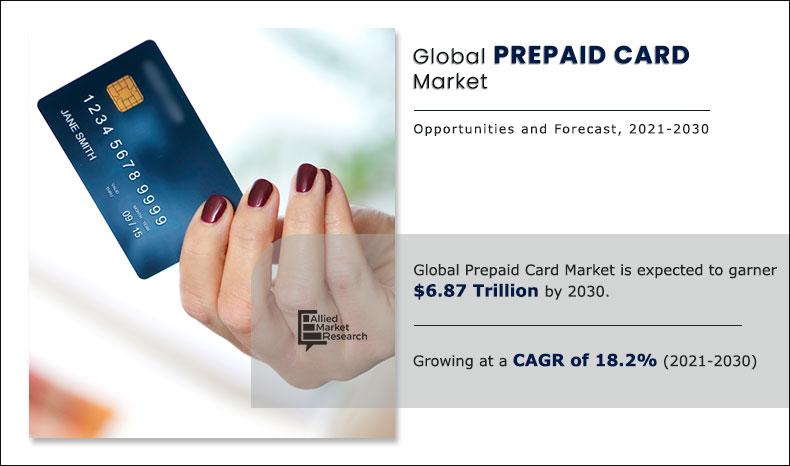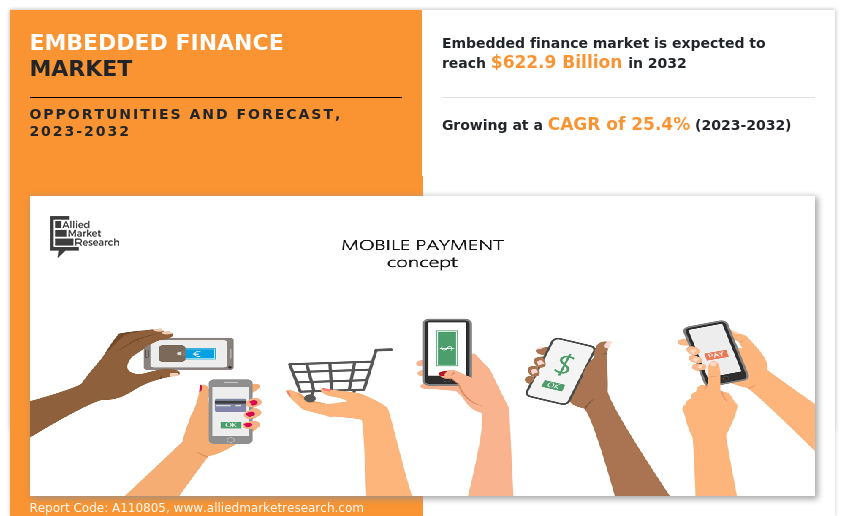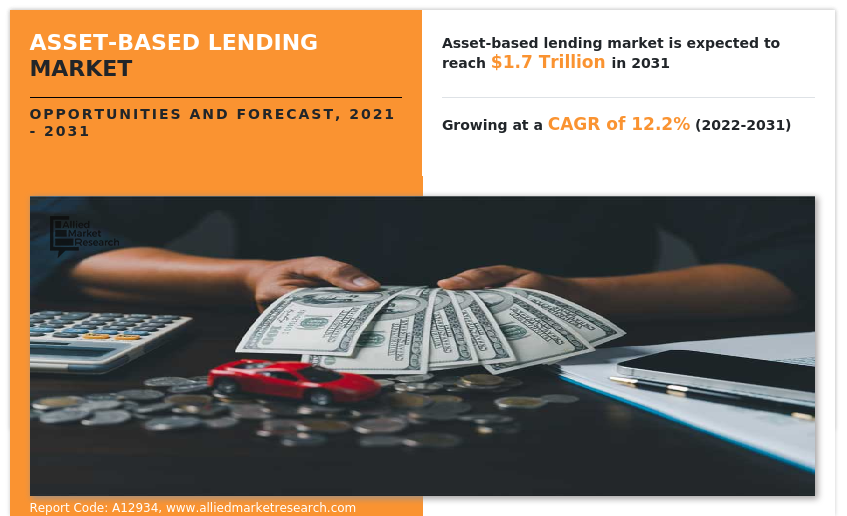The
banking BYOD security market is driven by the adoption of containerization. Containerization involves isolating work-related applications and data within secure containers on employees' personal devices. This trend ensures a higher level of security by separating corporate data from personal information and applications, reducing the risk of data breaches and unauthorized access.
Allied Market Research published a report, titled, "Banking BYOD security Market by Component (Solution and Service) Device Type (Laptop, Smartphone & Tablet), Security Type (Device Security, Email Security, Application Security, Mobile Content Security, Network Security, and Others): Global Opportunity Analysis and Industry Forecast, 2023-2032". According to the report, the global banking BYOD security industry generated $8,431.92 million in 2022, and is anticipated to generate $63,305.28 million by 2032, witnessing a CAGR of 22.7% from 2023 to 2032.
Request PDF Brochure: https://www.alliedmarketresearch.com/request-sample/10685
Prime Determinants of Growth
BYOD allows employees to work on their preferred devices, leading to higher productivity and efficiency due to familiarity and comfort. Adopting BYOD reduces hardware costs for banks as employees use their personal devices instead of dedicated devices provided by the organization strengthening the market growth. In addition, BYOD enables employees to work remotely or during non-traditional hours, improving work-life balance and increasing job satisfaction. Furthermore, employees use their own devices with personalized settings and applications, resulting in a more seamless and enjoyable user experience. Such factors enhance market growth. However, BYOD introduces potential security vulnerabilities, such as lost or stolen devices, unauthorized access, and malware threats, requiring robust security measures to mitigate risks. On the contrary, BYOD security solutions present opportunities to implement strong authentication methods like biometrics and multi-factor authentication, improving overall security. Moreover, the growing market for MDM solutions tailored for the banking industry provides centralized control and management of devices, applications, and security policies. Banks can offer specialized security services to customers, such as secure banking applications, encryption services, and secure VPN connections, to enhance their overall banking experience and build trust, which is expected to create lucrative opportunities for market growth.
The solution segment to maintain its leadership status throughout the forecast period
Based on component, the solution segment held the highest market share in 2022, accounting for more than two-thirds of the global banking BYOD security market revenue and is estimated to maintain its leadership status throughout the forecast period, attributed to the fact that banking BYOD security solutions provide features such as device encryption, remote data wipe, and policy enforcement to protect against unauthorized access or data breaches. Moreover, by implementing robust BYOD security solutions, banks can provide employees with the flexibility to work from their preferred devices while ensuring data security, which enhances employee productivity and satisfaction. Therefore, such factors are expected to create market growth opportunities. However, the service segment is projected to manifest the highest CAGR of 24.9% from 2023 to 2032, which has created a demand for robust security services. Companies can capitalize on this trend by developing advanced security services, offering consulting services, providing mobile threat intelligence, and delivering compliance and regulatory services tailored for the banking sector.
The laptop segment to maintain its leadership status throughout the forecast period
Based on device type, the laptop segment held the highest market share in 2022, accounting for more than two-thirds of the global banking BYOD security market revenue, this is because BYOD security solutions for laptops in the banking industry have become increasingly important in recent years. As more employees use their personal laptops for work-related tasks, it has become crucial for banks to implement robust security measures to protect sensitive financial data. However, the smartphone and tablet segment is projected to manifest the highest CAGR of 24.8% from 2022 to 2032, this is because these solutions aim to protect sensitive financial data and ensure secure access to banking services on personal devices. Mobile device management, mobile application management, and secure containerization are the key components of a banking BYOD security solution, as this software enables IT administrators to manage and secure mobile devices used in the banking environment.
The device security segment to maintain its leadership status throughout the forecast period
Based on security type, the device security segment held the highest market share in 2022, accounting for around one-third of the global banking BYOD security market revenue, this is attributed to the growing threat landscape, because sophisticated hackers and malware, necessitates constant advancements in security technologies and practices. In addition, regulatory requirements and industry standards continue to shape device security by mandating specific safeguards and data protection measures. However, the mobile content security segment is projected to manifest the highest CAGR of 26.6% from 2022 to 2032. The increasing use of personal mobile devices in banking, along with the benefits of productivity, cost savings, and employee satisfaction, along with advancements in security technologies, are the major growth factors driving the adoption of BYOD security for mobile content security in the banking industry.
North America to maintain its dominance by 2032
Based on region, North America held the highest market share in terms of revenue in 2022, accounting for nearly two-fifths of the global banking BYOD security market revenue. This is because consumers in this region prefer mobile banking and banks are also developing user-friendly mobile applications that allow customers to perform a wide range of transactions conveniently. Furthermore, consumers in this region are using mobile banking services that offer features such as fund transfers, bill payments, mobile check deposits, and real-time account monitoring, which can witness serious cyber-attacks. Thus, the adoption of banking BYOD security in North America is growing at a faster rate, which is driving market growth in this region. However, the Asia-Pacific region is expected to witness the fastest CAGR of 25.7% from 2023 to 2032 and is likely to dominate the market during the forecast period, this is because banks in this region are investing in digital platforms and mobile applications to provide convenient and accessible banking services to customers. Furthermore, banks in this region are adopting the practice of BYOD which in turn gives opportunities for the banking BYOD security to grow their market in this region, as the rate of hackers and cyber-attacks in countries such as India, Bangladesh and others is growing. Therefore, the adoption of banking BYOD security is projected to grow in this region.
Leading Market Players: -
Broadcom (Symantec)
BlackBerry Limited.
Cisco Systems, Inc.
Check Point Software Technologies Ltd
Fortinet, Inc.
IBM corporation
Palo Alto Networks, Inc
Sophos Ltd.
Trend Micro Incorporated.
VMware, Inc.
The report provides a detailed analysis of these key players in the global banking BYOD security market. These players have adopted different strategies such as partnership, expansion, and product launches to increase their market share and maintain dominant shares in different regions. The report is valuable in highlighting business performance, operating segments, product portfolio, and strategic moves of market players to showcase the competitive scenario.
Key Benefits for Stakeholders
This report provides a quantitative analysis of the market segments, current trends, estimations, and dynamics of the banking BYOD security market forecast from 2023 to 2032 to identify the prevailing banking BYOD security market opportunity.
The market research is offered along with information related to key drivers, restraints, and opportunities.
Porter's five forces analysis highlights the potency of buyers and suppliers to enable stakeholders make profit-oriented business decisions and strengthen their supplier-buyer network.
In-depth analysis of the banking BYOD security market segmentation assists to determine the prevailing market opportunities.
Major countries in each region are mapped according to their revenue contribution to the global market.
Market player positioning facilitates benchmarking and provides a clear understanding of the present position of the market players.
The report includes the analysis of the regional as well as global banking BYOD security market trends, key players, market segments, application areas, and market growth strategies.
Banking BYOD Security Market Report Highlights
By Component
Solution
Service
By Device Type
Laptop
Smartphone and Tablet
By Security Type
Others
Device Security
Email Security
Application Security
Mobile Content Security
Network Security
By Region
North America (U.S., Canada)
Europe (UK, Germany, France, Italy, Spain, Rest of Europe)
Asia-Pacific (China, Japan, India, Australia, South Korea, Rest of Asia-Pacific)
LAMEA (Latin America, Middle East, Africa)
Key Market Players
Palo Alto Networks, Inc., Trend Micro Incorporated., Fortinet, Inc., BlackBerry Limited, Broadcom (Symantec), Cisco Systems, Inc., Check Point Software Technologies Ltd., VMware, Inc., IBM Corporation, Sophos Ltd.
Buy Now@ https://bit.ly/43bS4zl











